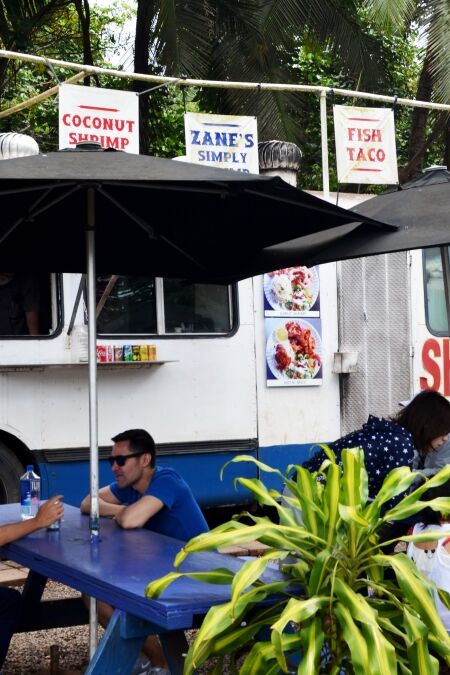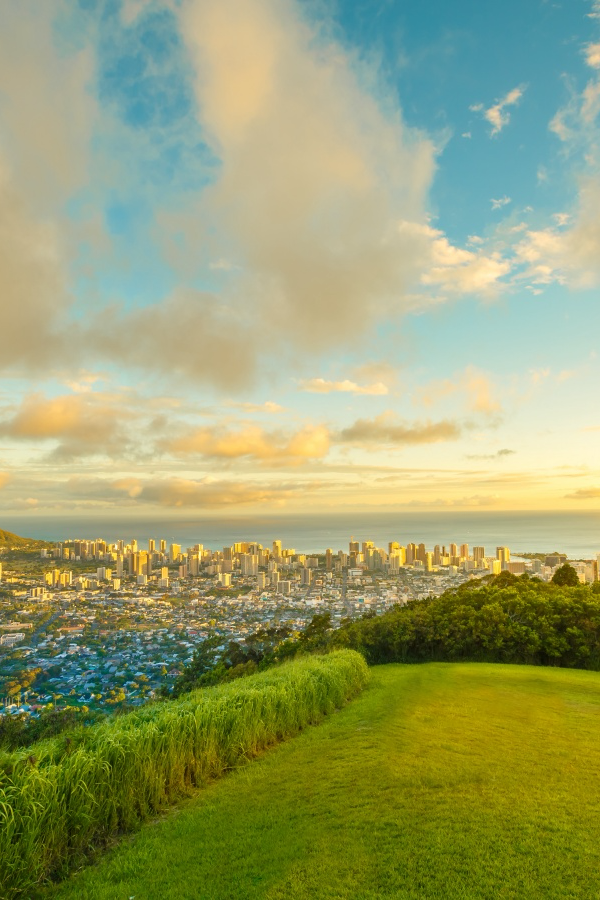Mount Tantalus is a scenic gem that offers breathtaking views of Hawaii’s natural splendor. This travel guide delves into the allure of Mount Tantalus, highlighting its panoramic lookouts, diverse hiking trails, and serene picnic spots perfect for a day’s adventure or a peaceful retreat. This guide provides all the essential information to make the most of your visit to this majestic mountain.
Highlights
- Enjoy breathtaking views of Honolulu, Diamond Head, and on clear days, even Pearl Harbor. This is a perfect spot for sunset watchers and photography enthusiasts.
- The park’s peaceful setting is great for a family day out or a quiet escape from the bustling city.
- Experience a scenic drive through a lush rainforest. The winding road of Tantalus Drive is a favorite for both cyclists and motorists, featuring numerous lookout points and hiking trails that branch off the main route.
- Mount Tantalus hosts several hiking trails ranging from easy to challenging. Popular trails include the Manoa Falls Trail and the Makiki Valley Trail, each offering unique flora and fauna sights.
- Explore the area’s history by visiting sites like the Kamehameha IV summer residence ruins.
History
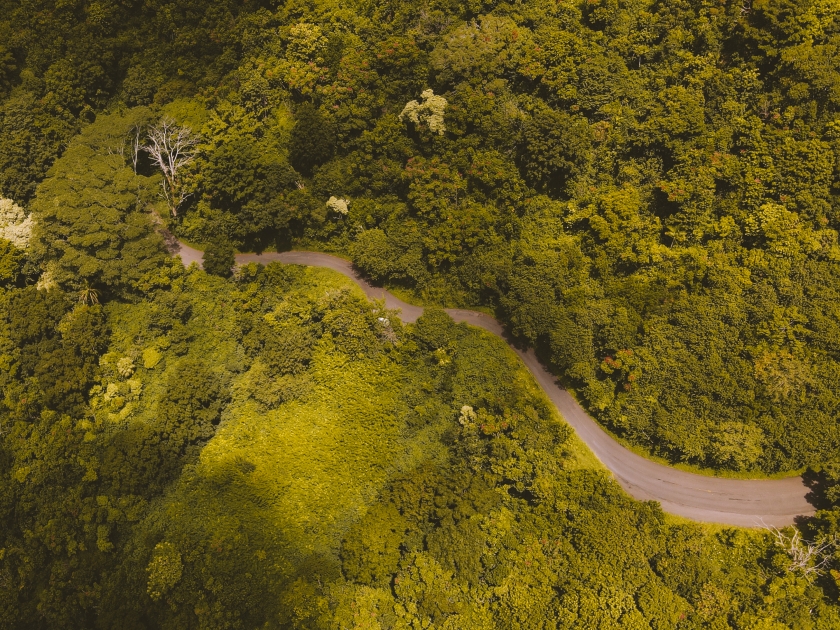
Volcanic Origins
Mount Tantalus, also known as Puʻu ʻōhiʻa, is an extinct cinder cone that shares its volcanic origins with other notable formations such as Diamond Head and Punchbowl Crater. These landmarks were formed during a period of volcanic rejuvenation on Oahu, illustrating the island’s dynamic geological past.
Native Hawaiian Heritage
Before the arrival of Europeans, Native Hawaiians utilized the area around Tantalus primarily for gathering resources and for recreation. The rich natural environment provided ample materials and a serene setting for early inhabitants.
19th Century Changes
During the 1800s, the landscape of Tantalus underwent significant changes. The booming sandalwood trade, along with the whaling industry, led to widespread deforestation, severely impacting the native forests that once thrived around the mountain.
Naming and Recreational Use
In the 1840s, students from Punahou School named the peak after the figure from Greek mythology, Tantalus, symbolizing the mountain’s lofty and isolated nature. Subsequently, the area became a beloved destination for hiking and other outdoor activities, drawing visitors with its natural beauty and panoramic views.
Modern Development
The early 20th century saw the construction of Tantalus Drive, enhancing access to the mountain and encouraging residential development. This road not only facilitated settlement but also became a scenic route for those looking to enjoy stunning vistas of Honolulu. Today, Mount Tantalus remains a popular spot not just for residents but also for visitors seeking a picturesque escape near the city.
Things to Do
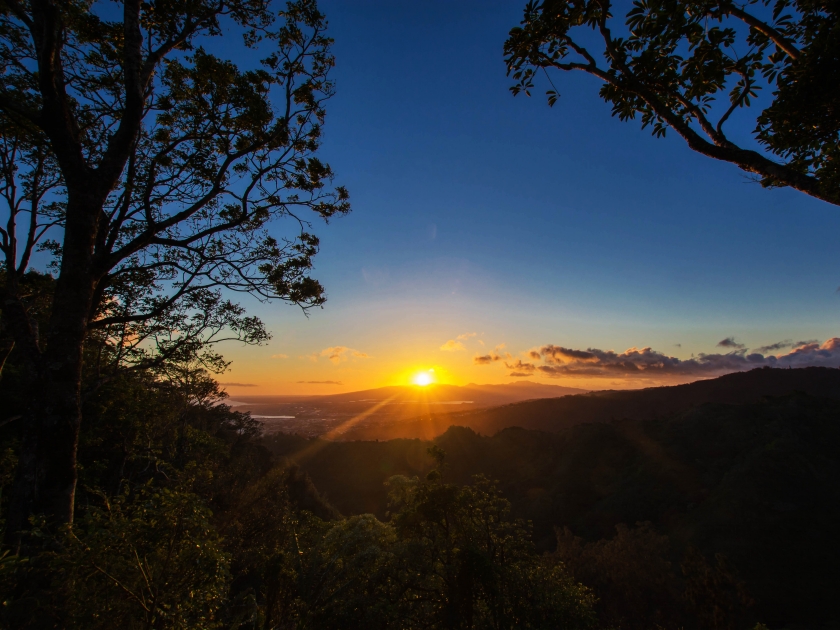
Explore Hiking Trails
Mount Tantalus offers a variety of hiking trails that cater to all skill levels, from leisurely walks to more challenging treks. The trails wind through lush forests and offer numerous scenic points perfect for taking in the stunning views of the surrounding landscape. Each trail is marked with difficulty ratings and estimated completion times, ensuring that visitors can select routes that best fit their abilities and schedules.
Discover Viewing Areas and Photographic Hotspots
For photography enthusiasts and nature lovers alike, Mount Tantalus is a treasure trove of viewing areas and photographic hotspots. The Tantalus Lookout provides unparalleled vistas of Honolulu and the Pacific Ocean, making it a prime spot for sunset and landscape photography. Other notable viewpoints along Tantalus Drive offer unique perspectives on Oahu’s dramatic geography.
Enjoy Recreational Activities
Beyond hiking and sightseeing, Mount Tantalus is a hub for various recreational activities. Picnic areas equipped with tables and grills are available for visitors looking to enjoy a meal surrounded by nature. The mountain’s trails also support biking adventures, and the diverse ecosystem makes it an ideal spot for bird watching, where enthusiasts might spot some of Hawaii’s rare and endemic bird species.
Top Attractions Near Mount Tantalus
Puu Ualakaa State Park
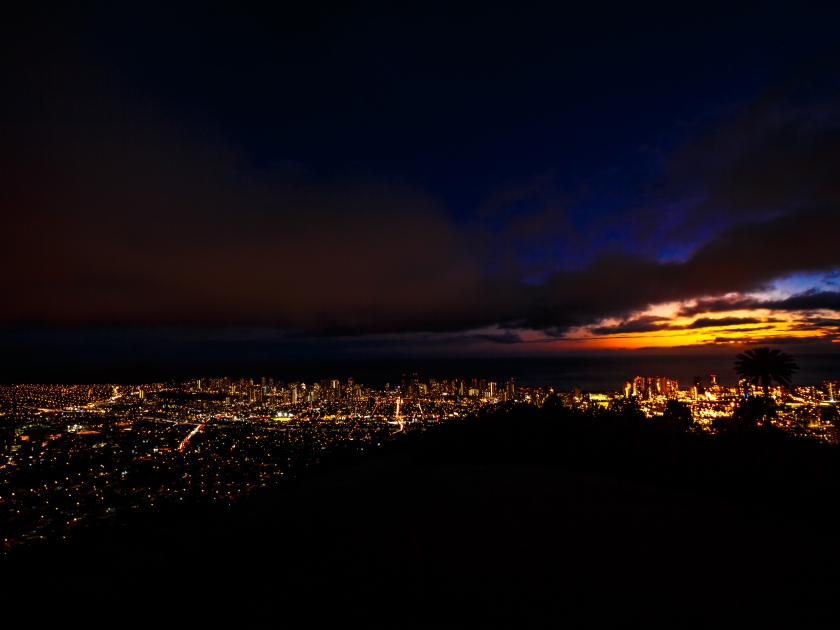
Just a short drive from Mount Tantalus, Puu Ualakaa State Park is a peaceful retreat that offers more than just stunning views. The park features well-maintained picnic areas, restrooms, and numerous trails that meander through native Hawaiian flora. Visitors can enjoy a panoramic view of southern Oahu, making it a perfect spot for photography, relaxation, and family gatherings.
Tantalus Lookout
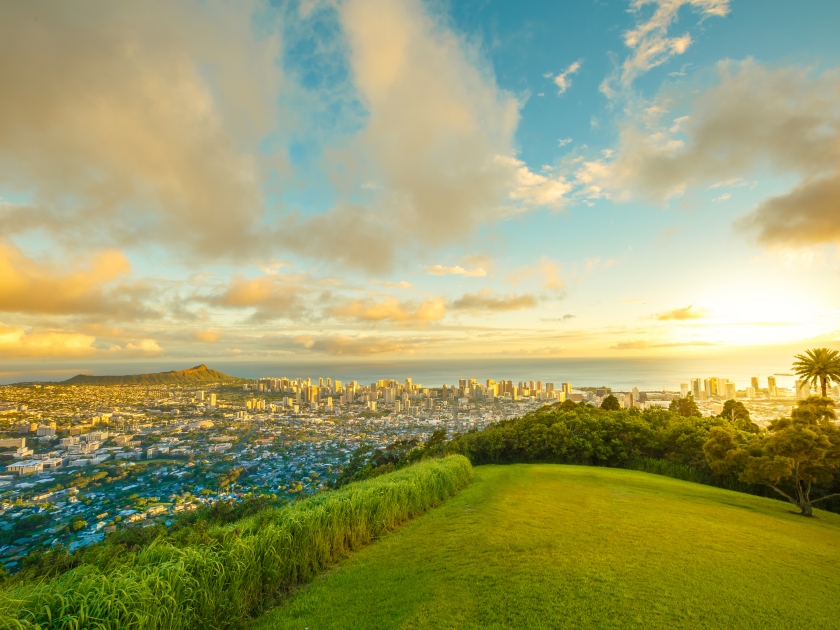
Perched atop Mount Tantalus, the Tantalus Lookout is a must-visit for its breathtaking views of Honolulu, Diamond Head, and the Pacific Ocean. Ideal for sunset viewing, this spot draws visitors for both daytime picnics and romantic evening stargazing. The lookout is accessible by both car and the network of trails crisscrossing the mountain, providing a rewarding finish to a vigorous hike.
Nearby Cultural Attractions and Historical Sites

Mount Tantalus is surrounded by a rich tapestry of cultural and historical sites that reflect Hawaii’s diverse heritage. Nearby attractions include the Bishop Museum, which offers extensive exhibits on Hawaiian history and culture, and the Queen Emma Summer Palace, a historical landmark that provides insight into the royal history of Hawaii. These sites offer educational and enriching experiences just minutes from the natural beauty of Tantalus.
Tips for Visiting
What to Pack for a Trip to Mount Tantalus
- Comfortable hiking shoes or boots for rough terrain.
- Weather-appropriate clothing (light layers for the day, warmer for evenings).
- Sunscreen, hat, and sunglasses for protection against the sun.
- Ample water and snacks, especially if planning longer hikes.
- Camera or smartphone for capturing the scenic views.
- A map of the trails or a GPS device.
Safety Tips for Hiking and Exploring the Area
- Stay on marked trails to avoid getting lost.
- Check the weather forecast before heading out to avoid rain or storms.
- Inform someone of your plans and expected return time.
- Carry a first aid kit for minor injuries.
- Be cautious of wildlife and keep a safe distance.
Local Regulations and Environmental Care Tips
- Adhere to all posted signs and stay out of restricted areas.
- Do not litter; pack out all trash to keep the area clean.
- Avoid removing any natural objects or disturbing wildlife.
- Use designated picnic areas and fire pits for cooking.
- Respect any cultural sites and monuments by not defacing or climbing on them.
Best Times to Visit Mount Tantalus
The best time to visit Mount Tantalus is during the drier months from April to October when the weather is more predictable and conducive to outdoor activities. During these months, visitors can enjoy clearer skies and fewer rain showers, making it ideal for hiking and picnicking. The cooler months from November to March can be wetter, but they also offer the chance to witness the lush, vibrant greenery that follows the rains. Additionally, special events like the blooming of native Hawaiian flowers and increased bird activity in the spring provide unique opportunities for wildlife observation and photography, adding an extra layer of appeal to visits during these periods.
Frequently Asked Questions (FAQs)
Mount Tantalus is a prominent hill located near Honolulu, Hawaii, known for its stunning city views and lush greenery.
Mount Tantalus is situated in the southern part of the island of Oahu, overlooking Honolulu.
Access to Mount Tantalus is primarily through Round Top Drive, a scenic road that winds around the hill offering spectacular vistas.
Key attractions include the Tantalus Lookout, Puu Ualakaa State Park, and numerous hiking trails that offer panoramic views of Honolulu and Diamond Head.
There is no entrance fee for Mount Tantalus, making it a popular free outdoor activity for both locals and tourists.
Facilities at Mount Tantalus include picnic areas, restrooms, and parking at Puu Ualakaa State Park, catering to day visitors.
How to Get There
By Car
To reach Mount Tantalus by car, begin your trip on H1 West from Honolulu. Take exit 25A for Kapiolani Blvd toward Waikiki/Kalakaua Ave. Merge onto Kapiolani Blvd, then make a left turn onto McCully St. Continue onto Metcalf St and turn right onto Nehoa St. Make a left turn onto Makiki St and follow the signs directing you towards Tantalus Drive. The winding road of Tantalus Drive takes you through a scenic route filled with breathtaking views, eventually leading you to the lookout points on Mount Tantalus. Parking is available but limited at popular lookout spots, so arriving early is advised.
By Bus
For those preferring public transportation, Honolulu’s bus system offers routes to the base of Mount Tantalus. Take Bus #4 from Ala Moana Center, and get off at the intersection of Nehoa St and Makiki St. From there, it’s a significant uphill walk to reach the beginning of the Tantalus trails. Note that there is no direct bus service to the top of Mount Tantalus or its lookouts, so be prepared for a hike if you choose this option. This method is best suited for those looking for a bit of exercise along the way to enjoy the mountain’s natural beauty.
Experience the Splendor of Mount Tantalus
As you explore this majestic mountain, remember to tread lightly and respect the natural environment that makes this place so special. Plan your visit today and experience firsthand the enchanting landscapes and rich cultural heritage that make Mount Tantalus a must-see destination.


